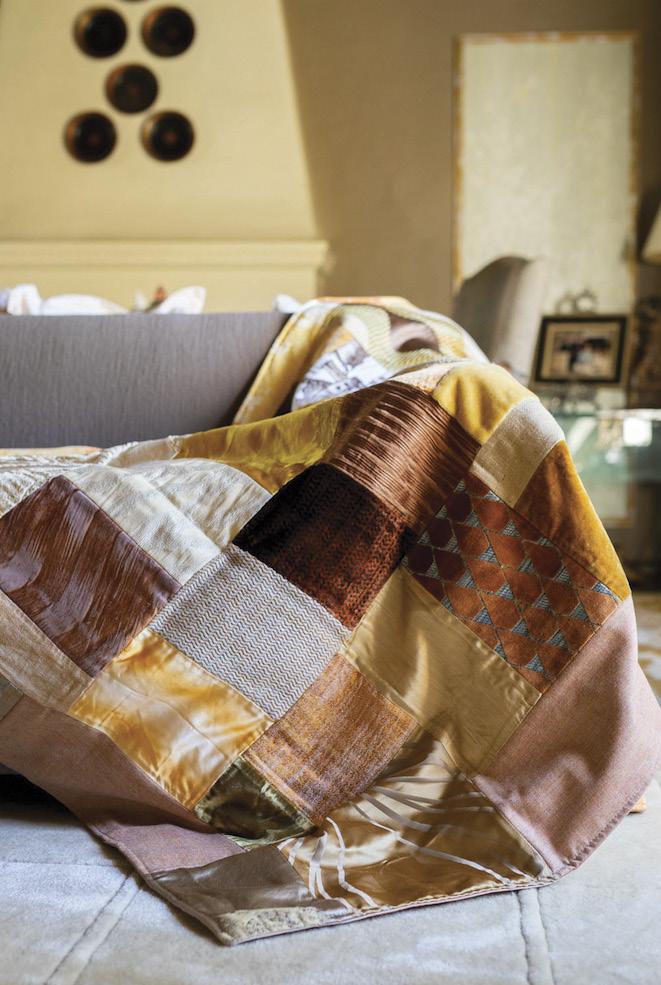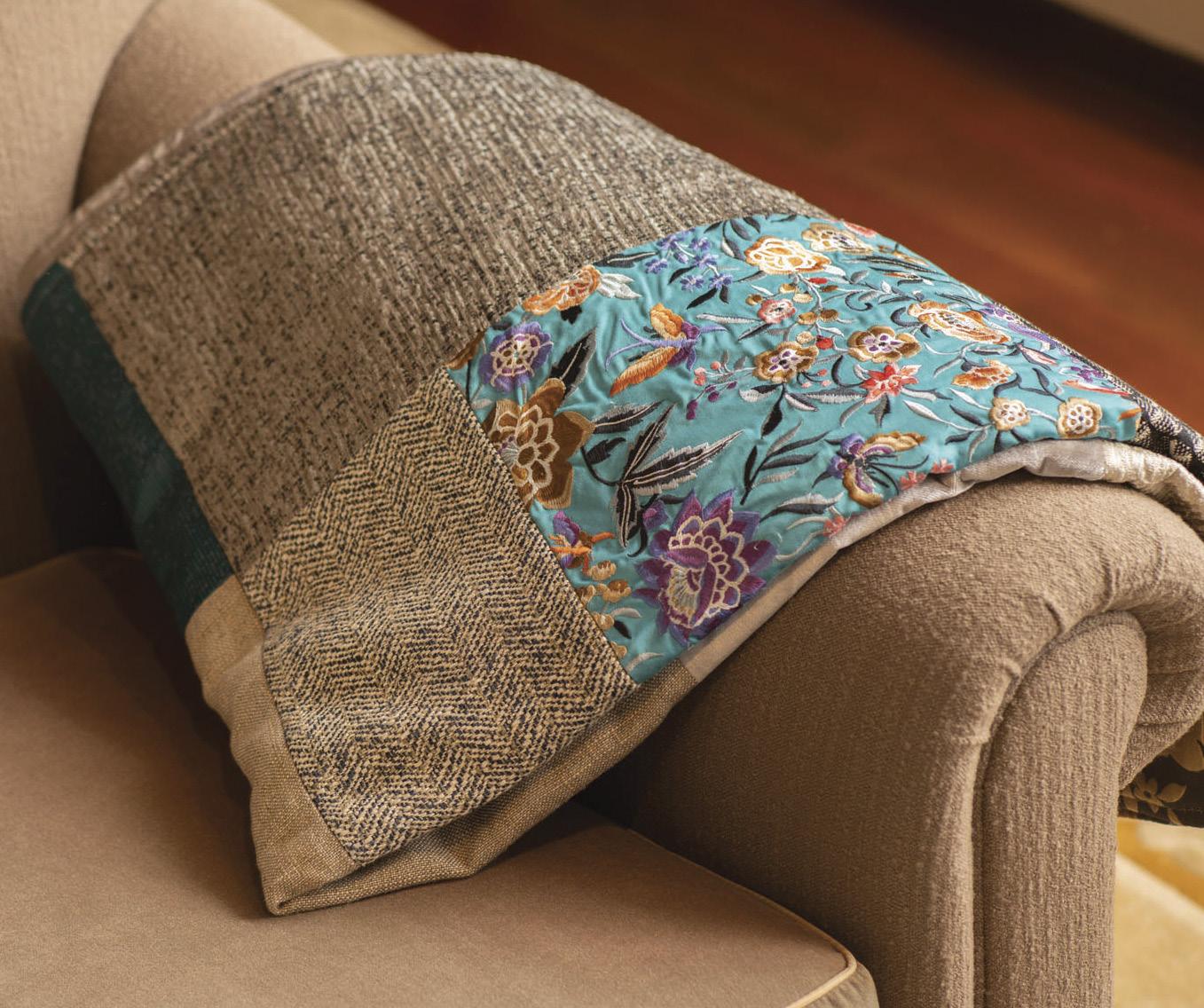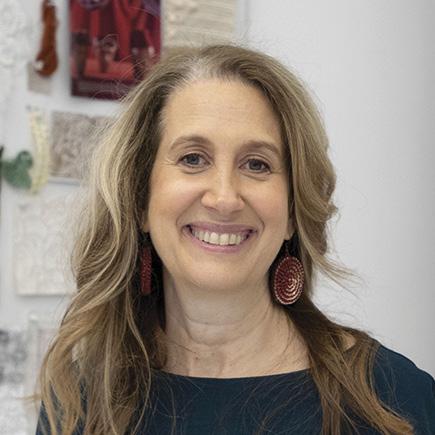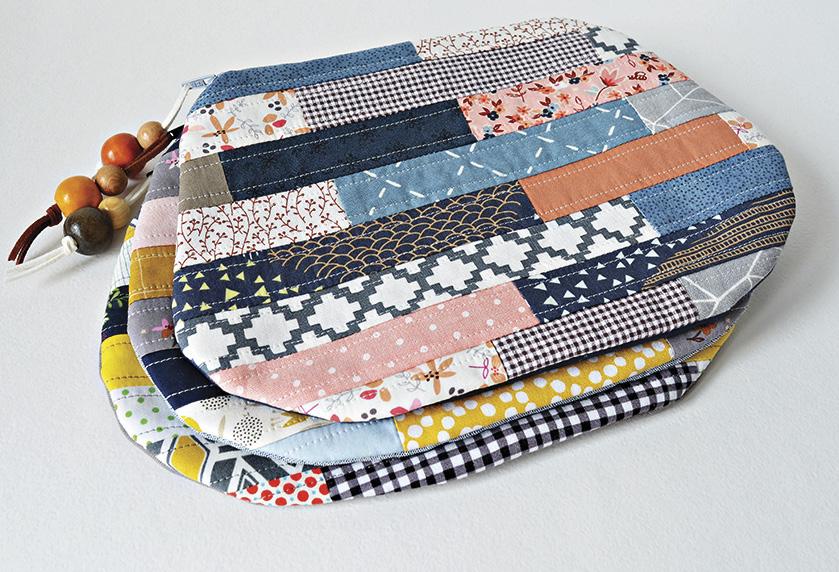
5 minute read
From Rags to Reuses
FROM RAGS TO REUSES
Upcycling solutions for textile scraps are generating unique products.
Advertisement
By: Madison Brazier
Sustainable solutions for textile remnants have grown in recent years as more companies explore the benefits of repurposing fabrics and yarns. Recognizing the environmental impact of overflowing landfills, innovative organizations are finding ways to give a second life to remnants and samples.
ReWeave L.A., a Los Angeles-based home products maker, takes discarded fabric scraps and samples and transforms them into oneof-a-kind and small-batch luxury home goods, apparel and pet pillows. Its creations celebrate the chance and beauty of unexpected combinations of materials with designs that are soulful and unique.
“Over the years, we borrowed many fabric samples for interior design projects,” says Debbie Quyang, co-founder of ReWeave L.A. “We always wondered what happened to the returned swatches at the end of each season. We learned showrooms discard the materials to make room for incoming collections. Julie Benniardi and I recognized the environmental effects of textile waste and we saw an opportunity to launch a social enterprise to upcycle materials into unique luxury home goods. Thus ReWeave L.A. was born.”

Made with indoor and outdoor fabrics, ReWeave L.A.’s ball pillows mix and match styles to create stylish ecofriendly home accents.
ReWeave L.A.
Every ReWeave L.A. product begins as a pile of last season’s fabric samples from top interior design showrooms. Co-founders Quyang and Benniardi personally sort through all of the materials and design each new product—all of which are made by artisans in Los Angeles. Committed to placing every swatch within a patchwork design, the organization never throws away any contributions.
ReWeave L.A.’s mission is three-fold. It’s trying to reduce the amount of fabric waste that enters landfills each year—particularly from the interior design industry. Second, it’s embracing Los Angeles’ unique creative culture by designing and producing all of its goods locally. And, the organization is committed to supporting its community by investing in job training for local residents facing barriers to employment.

Each of these throw blankets designed by ReWeave L.A. founders Julie Benniardi and Debbie Quyang has its own unique name.
ReWeave L.A.

ReWeave L.A. collects thousands of pounds of textiles every year. Instead of entering landfills, these fabric swatches are repurposed by local artisans and manufacturers to make one-of-a-kind home goods.
ReWeave L.A.
SMART SCRAPS
Recognizing the fabric and garment industries create massive amounts of waste that go directly into landfills, Cynthia Alberto created Weaving Hand. A Brooklyn-based studio and healing arts center, Weaving Hand combines traditional and contemporary weaving techniques with sustainable sourcing practices. Its Zero Waste Weaving initiative works with designers to repurpose material waste into “yarn” for use in new creations. The results are edgy fashion pieces made from repurposed fabric scraps.

Illustrating the unique beauty of upcycled materials, this coat was created by Weaving Hand in partnership with Jussara Lee.
Weaving Hand
“The scrap yardage is cut into strips and used as the weft material,” says founder and director Cynthia Alberto. “We help designers eliminate waste while adding one-of-a-kind pieces to their collections. The pieces are all custom and embody the designer’s aesthetic through palette and design.

ReWeave L.A.’s Versa stool ottoman is made with upcycled fabric scraps and converts to a side table with a removable top.
ReWeave L.A.
”Weaving Hand’s partnerships result in beautiful apparel with positive environmental, social and cultural impact. The organization also hosts “Weaving Together,” a series of ongoing collaborative weaving events that focus on healing the community and creating interpersonal relationships through the act of weaving together. While raising awareness of textile waste, the events let attendees bring their own materials—ranging from old clothes, fishing line, rope, or anything that can be made thin, flexible, and string-like—to add to the loom for weaving.
Weaving Together events give community members a chance to celebrate their neighborhood through the process of weaving. Hosted in different areas, they bring together people of all backgrounds and experiences for a day or weekend of weaving. The process helps build community around something tangible while letting the diversity of the materials become a reflection of its makers.
CONSCIENTIOUS DESIGN
As the demand for eco-friendly sourcing grows, more companies are emerging to meet consumer interest. Around the world, fabric upcycling is making an impact on fashion, interior design and art. NY-based textile and product designer Lori Weitzner understands the need for sustainable business solutions that can reduce the quantity of fabric waste going to landfills.

Lori Weitzner, NY-based textile and product designer An artist at heart, textile designer Lori Weitzner is personally committed to upcycling materials and saves her favorite remnants to repurpose into her own personal quilting projects.
“Artists and craftspeople are leading the charge of creating custom, beautiful pieces of art, fashion and other innovative products from existing discarded textiles that would otherwise go to landfills,” says Weitzner. “This provides a new business model to follow and these products are being sold and used in homes across the nation. These repurposing projects seem to be expanding every day and it makes use of a lot of waste, in innovative and beautiful realizations.”
Despite the growing demand for eco-friendly products in the industry, Weitzner acknowledges the need for greater education on the topic. “There is so much waste in general that every bit of repurposing can help. A few things need to happen at once for a real impact. Repurposing is certainly one, and all the recycling of fabrics, as well as yarns, is another. Also trying to be more thoughtful about how we sample our color blankets with the mills, and how we sample for the industry.”

A collaboration of Weaving Hand and Study NY, this woven clutch is fun, funky and upcycled.
Weaving Hand





